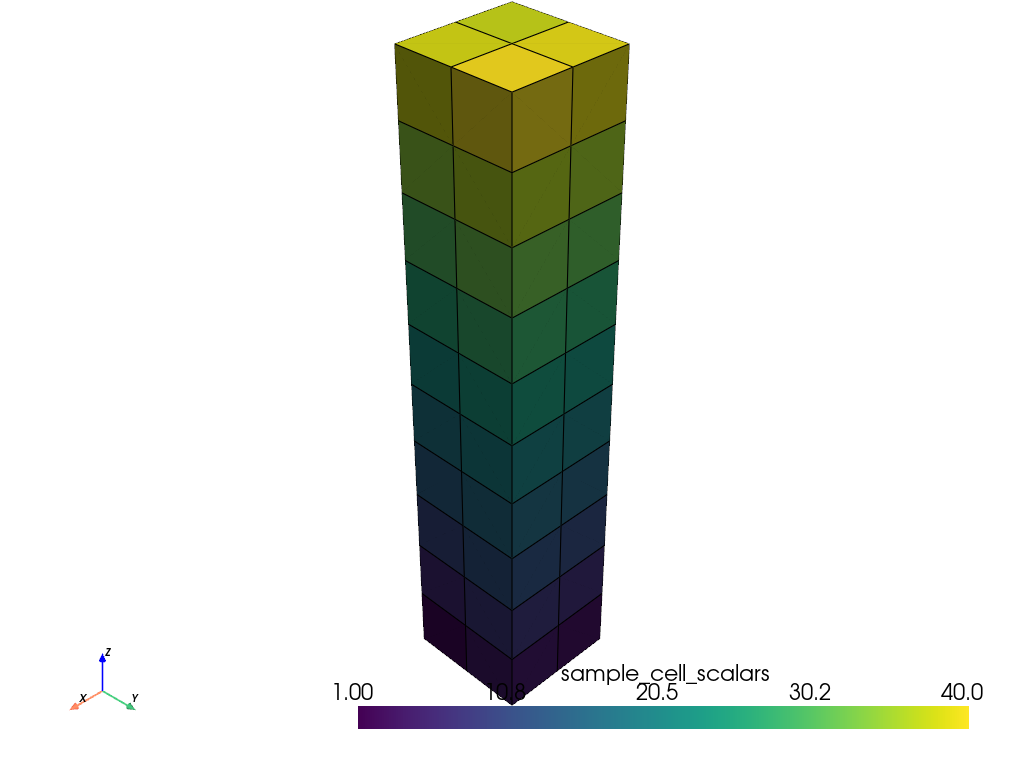pyvista.UnstructuredGrid#
- class UnstructuredGrid(*args, **kwargs)[source]#
Dataset used for arbitrary combinations of all possible cell types.
Can be initialized by the following:
Creating an empty grid
From a vtkPolyData or vtkStructuredGrid object
From cell, cell types, and point arrays
From a file
- Parameters:
- args
str, vtkUnstructuredGrid, iterable See examples below.
- deepbool, default:
False Whether to deep copy a vtkUnstructuredGrid object. Default is
False. Keyword only.
- args
Examples
>>> import pyvista as pv >>> from pyvista import examples >>> import vtk
Create an empty grid
>>> grid = pv.UnstructuredGrid()
Copy a vtkUnstructuredGrid
>>> vtkgrid = vtk.vtkUnstructuredGrid() >>> grid = pv.UnstructuredGrid(vtkgrid)
From a filename.
>>> grid = pv.UnstructuredGrid(examples.hexbeamfile) >>> grid.plot(show_edges=True)

From arrays. Here we create a single tetrahedron.
>>> cells = [4, 0, 1, 2, 3] >>> celltypes = [pv.CellType.TETRA] >>> points = [ ... [1.0, 1.0, 1.0], ... [1.0, -1.0, -1.0], ... [-1.0, 1.0, -1.0], ... [-1.0, -1.0, 1.0], ... ] >>> grid = pv.UnstructuredGrid(cells, celltypes, points) >>> grid.plot(show_edges=True)

See the Creating an Unstructured Grid example for more details on creating unstructured grids within PyVista.
Methods
Cast to an explicit structured grid.
UnstructuredGrid.linear_copy([deep])Return a copy of the unstructured grid containing only linear cells.
Attributes
Return the cell connectivity as a numpy array.
Return the cell data as a numpy object.
Return a dictionary that contains all cells mapped from cell types.
Return the cell types array.
Return polyhedron face locations.
Return the polyhedron faces.
Return the cell locations array.
Return the polyhedron face locations.
Return the polyhedron faces.